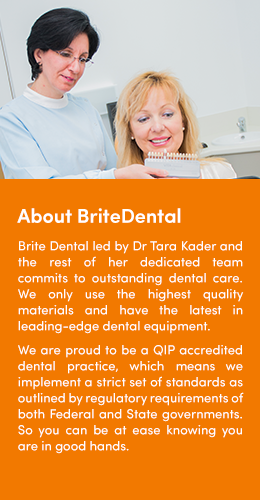‘Looking good, Feeling good’ is the way to go these days.
One of the most important aspects of looking good and feeling good is having a beautiful smile. A smile says a lot about a person, and a bright white smile with straight teeth can make people respond to you more positively and boost your confidence and self-esteem. For your convenience, we have a specialist orthodontist for adults and kids at our practice to cater to all your orthodontic needs.
Many people suffer silently, feeling embarrassed to show their crooked teeth when smiling, so they avoid smiling altogether. This can significantly impact their confidence and self-esteem. On the other hand, straight, beautiful teeth enhance confidence and provide a sense of security. Crooked teeth are also more challenging to clean, can cause issues with jaw joints, and may lead to facial muscle pain.
Improperly positioned teeth and jaws can cause serious damage if left untreated. That’s why we encourage our patients to seek the best orthodontics for kids and adults as early as possible.
At Brite Dental, we diagnose, treat, and correct a variety of orthodontic problems for patients of all ages.
Phases of Treatment
Early Treatment
The ideal age to diagnose bite and teeth alignment problems in children is between 7 and 9 years, as recommended by the American Orthodontic Association. This is because children are still growing, allowing us to address issues early as they develop. Early treatment helps encourage and guide the natural growth and development of a child’s teeth and jaws.
The goal of early treatment is to correct jaw growth and bite issues in children, reducing the likelihood of extractions during future orthodontic treatment. It also creates more room for permanent teeth to come in properly. If you’re seeking orthodontics for kids, our team at Brite Dental ensures your child receives the care they need for a confident and healthy smile.
Teen Treatment
Wearing braces during the teenage years is often the most effective time to achieve excellent results in a shorter period. Delaying treatment can make it more complex, as crowded or spaced teeth can worsen over time. This makes them harder to clean, increasing the risk of bad breath, tooth decay, gum disease, and even early tooth loss.
Starting treatment earlier allows teens to enjoy an attractive smile sooner, helping them feel more confident and comfortable. Straight teeth and a correct bite also make eating easier and teeth cleaning more effective. Most importantly, a confident teen will never shy away from smiling for photos, at social events, or in everyday life. If you’re looking for orthodontics for kids and adults, our practice caters to all age groups.
Adult Treatment
The value of a confident, attractive smile cannot be underestimated. It offers significant benefits for your personal, social, and professional life, especially in today’s world, where people want to look and feel their best.
Many adults are now choosing orthodontic treatment because they understand the importance of maintaining their oral health and want to feel better about their appearance. Our orthodontist for adults specialises in addressing complex alignment issues, bite corrections, and jaw-related concerns, helping you achieve a healthier, more confident smile. Whether it’s braces or clear aligners, our team at Brite Dental offers tailored solutions to suit your needs.
Common Orthodontic Problems
Here are some of the most common problems that we encounter.
Crowded teeth
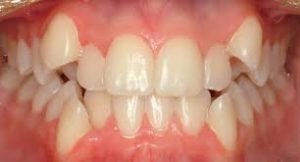
This is a condition that occurs when there is a mismatch between the size of the jaw and the size of the teeth. If the teeth are too big, they will not be able to fit in the jaw properly. Hence, crowding occurs.
Often, the new tooth grows at the back or in front of an existing tooth. Thus, the teeth look unattractive. A common orthodontic treatment plan for crowded teeth involves teeth extraction and dental braces.
Spaced teeth
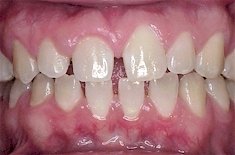
In this condition, the person’s teeth are too small for the jaw. As a result, widely spaced gaps between the teeth can form anywhere in the mouth. Dental braces can help close both small and large gaps.
However, spaced teeth may also be a result of other factors like habitual thumb sucking, abnormal tongue thrusting, and advanced periodontal disease. Elimination of the cause should be part of the treatment plan.
Protruded teeth (Overbite)

Protruded teeth are not only unattractive, but they can also affect a person’s bite and speech. Teeth protrude naturally when the upper jaw is too far forward, the lower jaw is too backward, or a combination of both factors. This condition, also known as an overbite, is often hereditary.
Aside from genetics, there are other reasons why teeth protrude. In addition, the severity of the condition differs among people. Treatments include alignment of the teeth, correction of the bite, and in severe cases, a jaw surgery.
Underbite
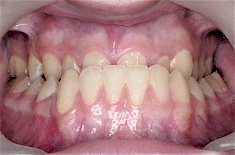
An underbite is the opposite of an overbite. In this case, the lower teeth protrude and extend farther than the upper teeth. Aside from affecting the person’s appearance, this condition may cause difficulty in speaking, chewing, and swallowing.
An underbite may be corrected with the help of a dental device, like the upper jaw expander, if the patient is still young. However, for more severe cases involving adults, treatment may require bite alignment through jaw surgery.
Deep bite
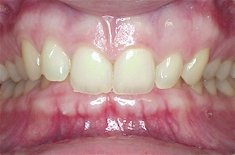
A deep bite is an increased overbite. In severe cases, the overlap is so deep that the upper teeth completely cover or hide the lower teeth. The condition can result in excessive damage to the teeth, temporomandibular joints, and gums.
A deep bite can happen to both children and adults, although treatment is much easier for children.
Open bite

When the mouth closes and there is a resulting gap between the upper and lower teeth, the condition is called an open bite. It can be due to a jawbone problem or a result of habits like abnormal tongue thrusting and thumb sucking.
Orthodontic treatment options include clear aligners and dental braces. Severe cases of this condition may even require orthognathic surgery.
If you want to know more about orthodontics or to book a consultation, call us on (02) 9774 4662.
Brite Dental is located at 62 Anderson Avenue, Panania, NSW 2213.


